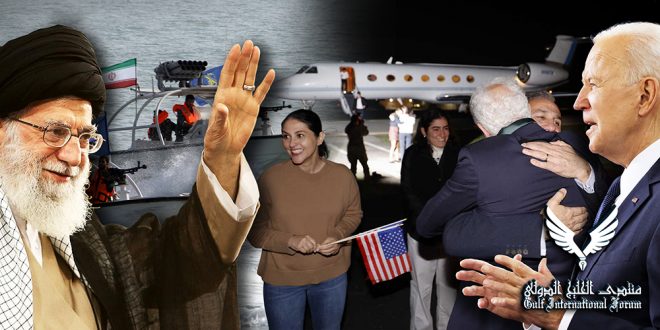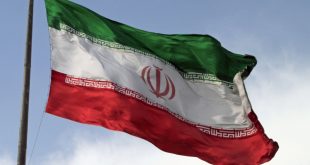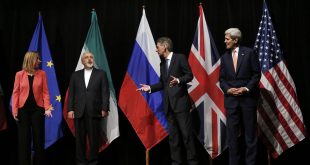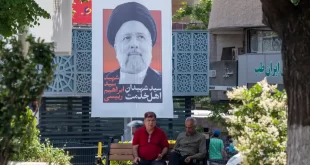The recent agreement between the United States and Iran could portend well for regional security—or it could reinforce existing divisions and promote further escalatory behavior from each side, with significant economic consequences in either case.
The recently announced prisoner swap between the United States and Iran has spurred debates about how it will affect regional security and oil markets in the Gulf. The latest U.S.-Iran agreement, which will release blocked Iranian assets and free U.S. citizens detained in Iran, will impact both issues. Iran’s economic stability might be affected by finding solutions to the problems brought on by the sanctions and having access to the money that had been blocked by the Trump administration. The relocation of American prisoners, prospective prisoner exchanges, and the expansion of U.S. military forces in the Persian Gulf all serve to highlight the unpredictability of the security situation in the region.
Implications for Regional Security
In exchange for access to $6 billion in oil income and the release of certain Iranian prisoners, Iran has agreed to release five American prisoners. The American detainees, who had been arrested on spying-related accusations, have since been placed under house arrest, and talks to secure their ultimate release are still ongoing. The deal was reached after months of tension and was mediated by Switzerland, Oman, and Qatar.
The deal was conducted against the backdrop of steadily simmering tensions in the Gulf region. In mid-August, the United States sent a warship to the Persian Gulf, prompting a flurry of threats from Tehran. The U.S. maintains that it is increasing its military presence in response to Iran seizing ships, a constant point of worry for the Gulf Cooperation Council (GCC) states. According to a former Iranian diplomat, the heightened American military presence in the Strait of Hormuz appears to have two objectives: to put pressure on Iran on dual-national detainees, and to limit Iran’s military activities.
In marked contrast to his predecessor, however, President Biden appears to have taken these steps as a precursor to negotiations, rather than as an end in itself. From the beginning, Biden’s goal has been a skillfully negotiated return to the JCPOA, likely as a stepping stone to a more comprehensive regional peace agreement. These efforts were derailed by the Mahsa Amini protests in Iran from September 2022 onward, but in the event of his reelection, Biden is likely to emphasize this all-encompassing strategy.
In the meantime, the United States intends to safeguard the Strait of Hormuz with 3,000 additional troops, as well as troop-landing warships and maritime forces providing warnings against approaching Iranian speedboats. These actions support the demand of GCC states for a more robust U.S. security presence in the region.
Diplomatic Endeavors and Uncertainty in Oil Markets
The agreement highlights the challenging procedure involved in negotiating the release of foreign detainees detained by nations with tense relations with the U.S. It is underlined that there is no one-size-fits-all method for bringing back Americans; instead, successful solutions frequently involve a confluence of diplomatic efforts, pressure, external factors, and good mediators. The deal’s execution emphasizes the complex nature of U.S.-Iran diplomacy—and its tendency for interruptions with changes in administration.
The recent U.S.-Iran prisoner swap agreement could have an impact on Gulf security and the oil market. Iran’s struggling economy will receive crucial financial assistance from the unfreezing of its foreign assets. Despite de-escalation measures, the possibility of an escalation between the U.S. and Iran still exists, posing a threat to safe oil tanker passage and perhaps upsetting the oil market, which will likely affect oil prices. If the agreement leads to a broader period of calm between the United States and Iran, it could bode well for the global energy outlook.
The agreement has sparked a wide-ranging discussion within the American foreign policy community. Conservatives and certain Iranian-Americans in the community are the agreement’s main detractors, who claim it is similar to a “ransom payment.” They express worry that giving Iran financial assistance may support its ruling elite at a time of clear vulnerability caused by the recent nationwide protests. Moreover, even if the released funds are carefully monitored to prevent them from being spent on weapons development, the government can simply reallocate spending on social services to sanctioned areas such as its ballistic missile and nuclear programs and use the newly released funds to make up for the shortfall. Some commentators and Republicans even argue for a stricter “maximum pressure” strategy, claiming that the freed monies could be utilized for terrorist operations or to attack U.S. soldiers stationed in the area in case of escalation.
Although the deal aims to settle several disputes between the United States and Iran, its wider ramifications for the security and oil market in the Gulf are complicated. The ability to access frozen assets may have an impact on Iran’s economic stability, which might then influence its regional actions. However, the continuous hostilities between the two countries, together with worries about regional security, create a tense situation that might continue to affect the stability of the oil market and the overall security situation in the Gulf area.
From the viewpoint of the oil market, the purchase brings some level of uncertainty. The Strait of Hormuz is a significant maritime route accounting for around 20% of the world’s oil traffic, making the Gulf area a key hub for global oil production and transportation. Concerns regarding interruptions to oil supplies across this vital canal have periodically increased as a result of the continuous hostilities between Iran and the U.S. The deal may indicate a de-escalation, but does not confirm it; on the contrary, the instability that led to the deal has not yet been addressed, and Iran’s perception that it can achieve sanctions relief through malign behavior could encourage it to do more of the same. In reaction to recent Iranian activity, the U.S. has increased its military presence in the Persian Gulf, underscoring the ongoing security dangers that may hinder oil delivery.
The accord has conflicting security ramifications. The proposed prisoner swap might be a step in the right direction for diplomacy, but the history of U.S.-Iran ties shows how precarious such agreements can be. Geopolitical tensions have been particularly high in the Gulf, with proxy wars, missile launches, and maritime confrontations involving Iran and its rivals. The exchange of prisoners is a diplomatic courtesy, but neither a permanent easing of hostilities nor the removal of security risks are assured by it.
The participation of Qatar is noteworthy in the deal, as is the routing of frozen payments through its central bank. As a friend to both the United States and Iran, Qatar’s presence might lend stability to the deal’s implementation. The distribution of resources may also have an impact on Iran’s geopolitical actions and regional operations, which in turn may have an impact on the Gulf region’s overall security situation.





